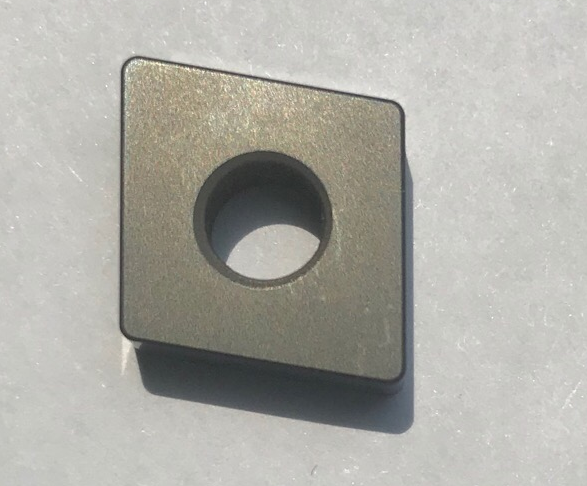The Main Failure Mode of CBN Turning Tools Inserts
CBN turning tools inserts are synthesized with CBN micropowder and a small amount of binder under high temperature and high pressure conditions, and their hardness is second
only to diamond. Although CBN turning tools are durable, the worn or broken still will happen after some time, and the main form of failure is broken. The broken forms of brittle fracture
are as follows:
Chipping
This is a common form of breakage in CBN tools for continuous or intermittent cutting of steel and cast iron. It is a small gap created in the cutting edge, with a few small gaps in the edge
or a small piece that has collapsed. Generally, the gap size is equal to or slightly larger than the feed rate. The micro-cracking tool continues to cut within the allowable wear limits.
Peeling off
When end-milling steel and cast iron, shell-like spalling occurs most often on the rake face. When the cubic boron nitride tool end milling hardened steel (HRC58-65), a large area of
shell-like spalling on the rake face, such wear occurs, which can increase the cutting speed, reduce the feed rate, and use negative chamfer and honed edge.
Broken
Small pieces or large pieces of fracture occur on the cutting edge, and normal cutting cannot be continued. Cubic boron nitride cutters often break when continuous turning high-hard
materials or interrupted cutting. When turning hardened steel, due to the high cutting speed, small cracks occur at the tip of the tool, and usually can be reground and repaired. . When
the cubic boron nitride tool intermittently turning (40MnNi3CrMo), the low alloy steel has a large fracture at the tip of the tool. In this case, the tool cannot be reground. This is due to the
excessive impact load during intermittent cutting and the early damage that occurs after short-time cutting. Although the cutting conditions are appropriate, after cutting for a long time,
there is no timely tool change, which occurs the break due to tool material fatigue..
Crack
After a long time of intermittent cutting, the cubic boron nitride tool has mechanical fatigue cracks parallel to the cutting edge caused by mechanical impact, and cracks perpendicular to
or inclined to the cutting edge due to thermal shock. When these cracks are continuously expanded and merged, the inserts is cracked or broken.
Previous Article:Diamond Wire Drawing Die for Drawing Copper Plating Wire
Next Article: The Important Index of PDC Product Quality - Impact Resistance







